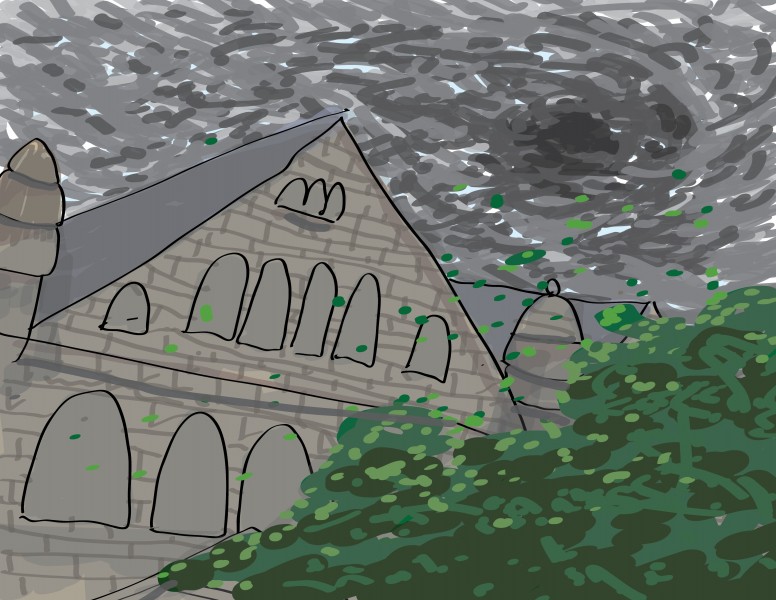Our core curriculum is incomplete without a class on Hurricane Katrina
Ezra Weber is a sophomore who studies English and economics. He serves as the Sports Editor for The Hullabaloo.
No single event seems to have had as great an effect on the New Orleans community as Hurricane Katrina. Every longtime New Orleans resident has a Katrina story. Yet the school fails to recognize this in its current course offerings.
The university’s mission statement reflects a desire to promote cultural and social understanding through “the context of the unique qualities of [its] location in New Orleans.”
While Tulane’s updated course curriculum has done an impressive job at connecting the Tulane community to the greater New Orleans area, it has neglected to include discussions of the storm’s impacts on the city among these course selections.
This is an egregious error on the part of the school considering that the remnants of the storm that still rear their ugly heads in the public school system, municipal infrastructure and housing affordability. Even in everyday conversations, years after the winds and torrential rains have calmed, people and places still wear the scars left by the storm.
Katrina affected over 15 million people in different ways, either through forced evacuations or in the immediate and long-term economic consequences.
A new study has found that in New Orleans, neighborhoods with more damage from Hurricane Katrina were more likely to face gentrification. @Richard_Florida reports: https://t.co/RmiEjNArPf
— CityLab (@CityLab) February 19, 2019
City streets are still gouged out, and neighborhoods that once thrived now lie dormant like ancient Rome’s Pompei. More than 14 years after the storm, drainage systems are still falling victim to blockage from debris left by Katrina. Only recently, a car reported missing on Aug. 29, 2005, was pulled out of the Lafitte Canal among 750 tons of other junk.
But of course, this issue is so multidimensional that it would be incredibly challenging to encapsulate in a single course. Tulane’s unique academic services, however, might offer the perfect response to this problem.
Since September 2016, the school has offered a new type of course, 360-degree courses. These courses aim to attack various societal issues from all their complex angles. Employing at least three faculty members in the classroom from multiple disciplines allows for multidimensional analysis of the topic the course covers.
.@gladwell examines the long-term effects of the forced relocation of Hurricane Katrina victims from their homes: http://t.co/lY4MxVkzVW
— The New Yorker (@NewYorker) August 18, 2015
“We want students to not treat New Orleans like its a commodity. It’s an amazing privilege to be part of the story of this community,” Alison Cruz, director of academic programs in Newcomb-Tulane College, said. “I think that sometimes we fall short of giving students the frame to make sense of all of it and how they can interact in it.”
Cruz works closely with the TIDES program, whose goal is to help first year students “explore academics and the city of New Orleans from multiple academic perspectives.” While the program provides an incredible service to first-year students, it cannot be fully effective without discussing Katrina.
In light of this, it is imperative that Tulane create a mandatory 360-degree course on the multidimensional impacts Katrina has had on the city. It may be difficult to add another mandatory course for first-year students, which is why it ought to be completed anytime within a student’s undergraduate experience.
Further, to allow for flexibility among faculty, the course should be flexible year-to-year in order to touch on Katrina from many different perspectives.
At any given time, students should know the different versions of the Katrina course that will be offered over the next four years. By knowing which angles the courses will take from year-to-year, students will be able to plan to take the version that suits their interests best.
The Tulane curriculum can no longer ignore the Katrina’s lasting impacts on the city of New Orleans if it hopes to facilitate a genuine process of academic exploration of the city for its students.
Your donation will support the student journalists of Tulane University. Your contribution will allow us to purchase equipment and cover our annual website hosting costs.




Reggie Ferreira • Oct 6, 2019 at 1:30 pm
I highly recommend, checking out the Disaster Resilience Leadership Academy based within the Tulane School of Social Work. https://tssw.tulane.edu/drla The curriculum has several focus areas focused on Hurricane Katrina.
Matt Culkin • Oct 5, 2019 at 2:34 pm
I recommend any class by Richard Campenela. He is brilliant and cover the hurricane’s causes and aftermath.
Sandy Rosenthal • Oct 3, 2019 at 5:28 pm
Ezra Weber is right, especially with the 15th anniversary knocking at the door. According to NOAA, 1577 people perished and a million people were affected. Some are still in trauma. The changes to national policy directly due to the disaster are nearly countless. To its credit, Tulane did have the Disaster Resilience Academy founded by Charles Figley for several years. And Rosalind Cooke offers a course called The Politics of Katrina for several years. But the burden should not be carried by only Drs Figley and Cooke. There needs to be more offerings and they need to continue.